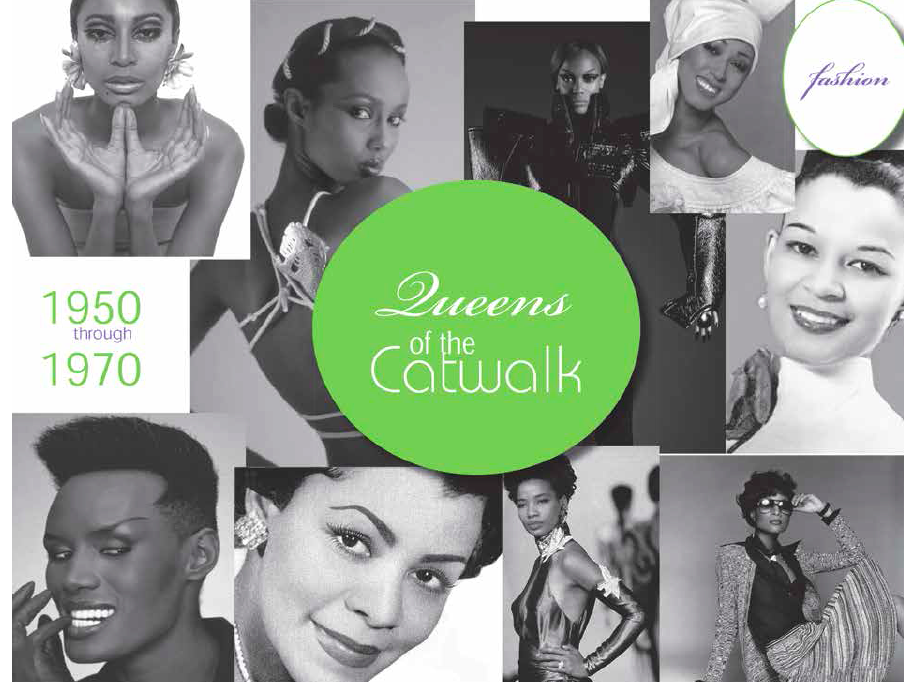The fashion world photographed its first beautiful Black model over 60 years ago. Before there was a movement and before the world was ready to welcome black models, their legacies were already being made behind lenses across the globe. Although Blacks were not able to participate in the American mainstream fashion industry during the turn of the 20th century, they were always very lucrative at establishing and cultivating their own fashion expositions at the local and national level. The history of Black fashion is a controversial revelation, especially for those new to it. Despite the industry’s prejudice, many striking and talented Black beauties were highly successful as early as the 1940s.
Dorothea Towles was discovered by Christian Dior in 1949, when she was on a two-month vacation in Paris with her husband and Lois Towles, her famous concert pianist sister. Dorothea was on her way to stardom because of her exclusive modeling contracts with black magazines, but her discovery in Paris launched her global fame. Dorothea’s triumph is a key thread in groundbreaking American history because she was the first Black woman accepted into the world’s top fashion houses in Paris.
According to an article written by Dyl Bishop for Ebony magazine in 1974, Sara Lou’s classmates once said to her, “We prophecy that you, Sara Lou Harris, will become a successful high fashion model and the best hat mannequin in the industry.” Sara Lou Harris proved her classmate right, becoming Ebony Fashion Fair’s signature model, as well as the first Black model to land a national advertising campaign. She was signed by Branford Lovelies of the Branford Modeling Agency — the very first modeling agency for Black women. Harris’ career also enabled her to become the first Black woman to be featured in the New York buyers fashion show, and the first Black woman to appear as a glamour girl on the Lucky Strike cigarettes poster. Like Dorothea Towles, Sara’s incomparable beauty, intelligence, and fearlessness led her to appear on widely popular magazines such as Ebony, Jet, Tan, and more. “I always wanted to make something of myself to help my own people,” said Sara Lou Harris in an interview for the New York Times in 1966.
Standing a stunning 6’2, Donyale Luna is a fallen goddess too often forgotten as the first Black model to grace the cover of British Vogue in 1966. Donyale was a muse for many brilliant artistic minds like photographer, Richard Avedon and surrealist painter, Salvador Dali. In 1964, the same year as the Civil Rights Act, photographer David McCabe discovered the 14-year-old Donyale on a Detroit street. “I was stunned… she was so tall and slender,” revealed McCabe when he first saw the already 5’11 Donyale in her Catholic school uniform. Shortly after her discovery, Times magazine published in 1966, “The Luna Year,” describing Luna as “a new heavenly body” who, because of her striking singularity, promised to remain on high for many a season. Often called an odd species that resembled Queen Nefertiti, Donyale Luna is a key trailblazer in American history despite her controversies.
Naomi Sims was an Oxford, Mississippi-born beauty who approached photographers on her own, until her big break in August 1967. Sims is an essential catalyst in Black fashion history, as the woman who manifested the “Black is Beautiful” movement, and for her unapologetic determination to craft opportunities for herself. Naomi Sims took the late ’60s and ’70s by storm, gracing countless runways and dominating magazine covers all over the world. “She was one of the first political pioneers of Black fashion history, who after just five years in the fashion world retired to become an independent entrepreneur, launching her own multimillion-dollar wig and cosmetics company.
Pioneering cover girls like Beverly Johnson, Pat Cleveland, the Versailles Models of 1973, Grace Jones, Iman, Mounia, Roshumba Williams, from Tyra Banks to Joan Smalls, and all gorgeous black models in between have contributed to breaking the social, elitist, and racial barriers in American history. It is the determination, courage, resilience, and intelligence of these countless beauty paradigms that have steered pivotal moments in American history. We celebrate these women not only because of their breathtaking and unique beauty, but for enabling more diverse beauty standards throughout the fashion industry. What makes every woman of color within the fashion industry a “Queen of the Catwalk,” is their tenacity in the face of racism, in order to foster acceptance of the inherent beauty of all races. To understand Black culture and fully credit its trailblazers, there is an immense catalog of unexposed cultural-historical information about black fashion that must be unveiled. These pioneers of the past and present single-handedly changed the norms of the fashion world, and challenged the industry to celebrate the dark skin that was once rendered second-class during slavery, which the minstrels once ridiculed, and that had relegated Hollywood’s actors to roles as maids and clowns — into historic icons, into historic icons that are unquestionably desirable, profitable, and stunning. One will never understand the castings and productions of white models painted in brown face, when the world is filled with stellar brown beauties more than capable of bringing any vision to life in their very own skin. But the legacies of these Queens will continue to live on and change the way American and international designers incorporate Black models, while exposing audiences to the allure, body types, and spirit of Black models.
Shea Zephir can be reached at @sheazephir
www.sheazephir.com

